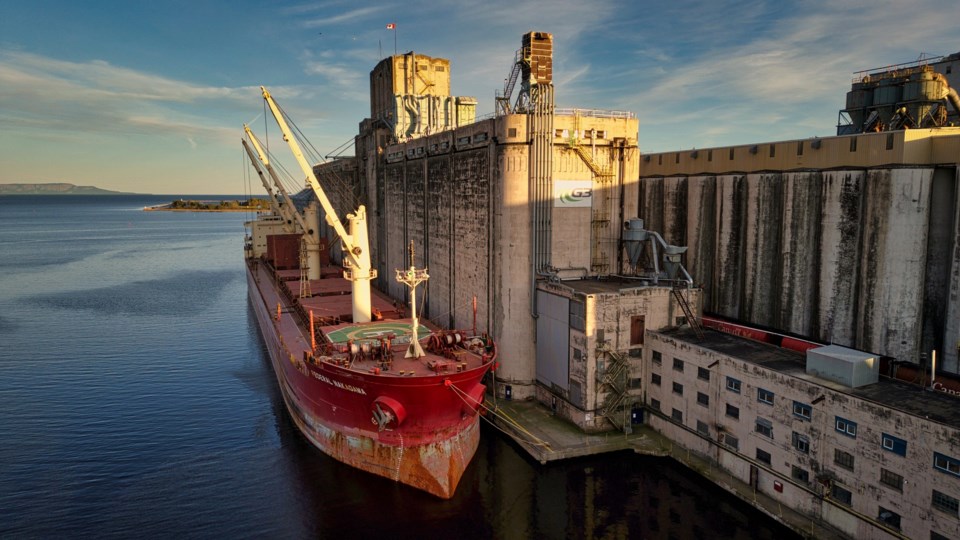THUNDER BAY — One of the best-ever prairie harvests means more work for people employed in the grainhandling and shipping sectors in Thunder Bay.
The Thunder Bay Port Authority said grain shipments in October rose by 33 per cent from September, and were eight per cent better than October 2021.
"So far, so good," said Chris Heikkinen, the port's director of business development and communications, in an interview Monday. "During October we had certainly the busiest month we've seen this shipping season. It's a promising fall for grain."
This marks a return to a more typical volume of grain transiting the port, following a year of decreased shipments. Last year's harvest was the poorest in over a decade, as it was impacted by drought and heat on the prairies.
Grain from the 2021 harvest moved through Thunder Bay from the opening of navigation and into September.
But this year's harvest is the third largest on record, and grain from this crop is what's currently being shipped through the port to markets in Europe, Africa and South America.
Although year-to-date grain shipments remain below last year's totals because of the smaller size of the previous harvest, another important cargo category is showing a dramatic increase in tonnage due to Russia's war against Ukraine.
Thunder Bay has handled 1.07 million tonnes of potash from Saskatchewan so far, over 150 per cent more than a year ago.
The port authority notes that global supplies of potash, which is an important component of fertilizer, have been stretched by sanctions imposed against Russia and its ally Belarus.
Together, the two countries are responsible for almost a third of global production.
Heikkinen said Thunder Bay hasn't handled this much potash through the port in more than 30 years.
Port facilities include seven grain elevators, three dry bulk terminals, two liquid bulk terminals, Keefer Terminal (general and project cargo) and a shipyard with a dry dock.
The port authority is hoping for favourable weather conditions to stall the formation of ice before the shipping season ends in early January.
Heikkinen said "a very strong lineup" of shipments is due to arrive at Keefer Terminal over the next couple of months, bound for western Canada.
The terminal handles general and project cargo including larger structural items such as wind turbines and other steel products.
It's estimated that shipping-related activity accounts for 900 direct jobs in Thunder Bay and generates an annual economic contribution of $370 million.
So far this year the port has been visited 282 times by cargo vessels including 109 times by overseas-registered ships, 170 Canadian, and three from the U.S.
